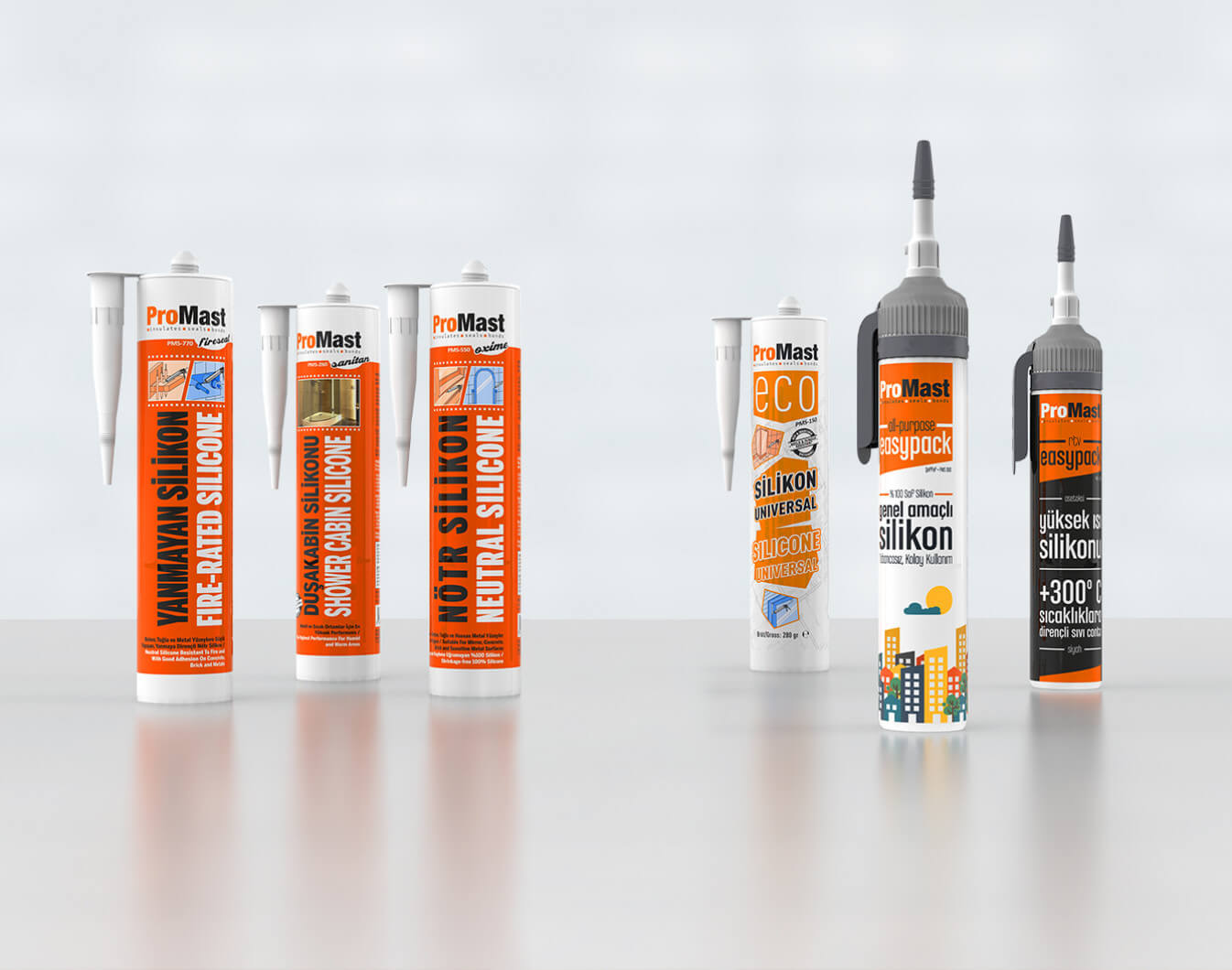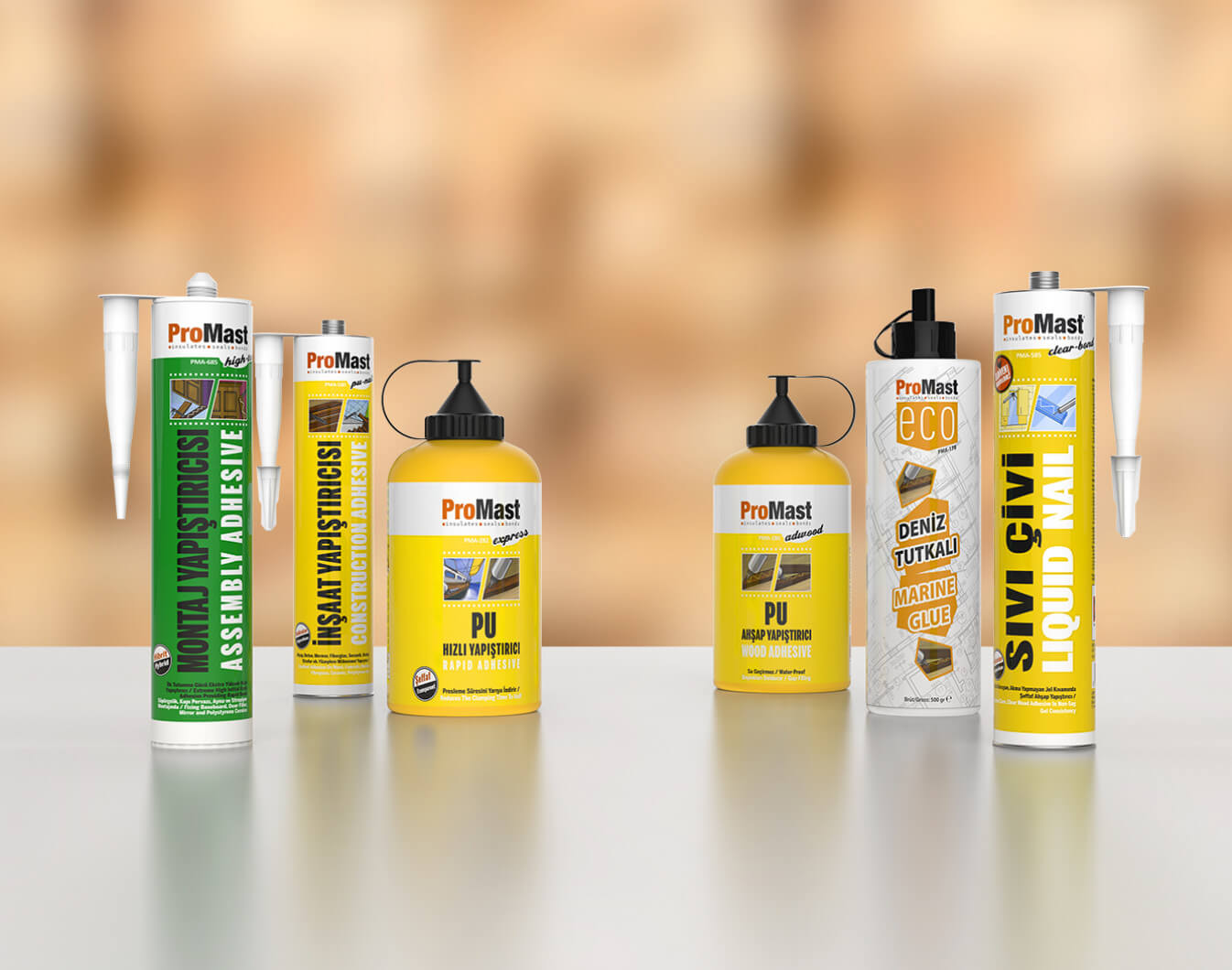Can you apply polyurethane also to plastic surfaces?
There are types of plastics to which polyurethane foam can and cannot be applied. While polyurethane foam is compatible with polystyrene sheets (such as EPS, XPS), rigid polyurethane sheets, plastics such as polyester and rigid PVC, its compatibility with plastics such as PE, PP, silicone, and Teflon will not be satisfactory. For this reason, knowing the type of surface you will apply will play an active role in getting a better quality result.
I haven’t finished all of the polyurethane foam and put it away in my storage. When I wanted to apply it again after a few days, the foam which dried in the pipet made the can unusable. What can I do?
Promast Pipettes spare pipette set enables you to use the can over and over again in such cases. If you do not have a spare pipet, you can use your foam again by cutting the tip of the pipet that contains hardened PU foam inside it.
Can I use aerosol polyurethane foams also for sound insulation?
The priority of polyurethane foams with a closed-cell structure is to provide thermal insulation. However, foams with an open-cell structure may also be preferred in terms of sound insulation.
Are polyurethane foams resistant to high temperatures?
The structures of polyurethane foams break down when they are exposed to temperatures of 90 °C and above for a long time. On the other hand, they endure temperatures of 130 °C and above for hours.
What should I use in projects that require a fire safety procedure?
Projects with fire safety procedures (for example, in the construction of buildings such as fire exits, hospitals, schools, etc.) make the use of foam and silicone with fire retardant properties obligatory. Promast Fire Foam and Promast Fire Seal are our products that come to the forefront with their fire-retardant properties.
What is the life span of the application gun?
Application guns are products that you can find in different qualities as in everything else. For this reason, it would be a mistake to indicate a single life span for them all. However, the maintenance and cleaning you will do to the application gun following each application will keep your gun suitable for use for a longer time. If you clean the foam from your gun before it completely dries following the application with Promast Cleanse, your gun will show performance in every reuse like the first usage.
Should I throw away the aerosol foam that I have consumed?
On the contrary to the practice in many EU countries, unfortunately, there is no institution in our country which collects consumed aerosol foam cans for recycling. Even if it is used until the end, 20-40 grams of polyurethane polymer and propellant mixture may remain in each can and this creates a risk in terms of environmental pollution. For this reason, we recommend you to keep the can waiting upside down for a while for its contents to completely empty before you throw it away.
Should I make a special surface preparation in order to apply aerosol polyurethane foams?
Cleaning the surface from oil, dirt, and dust-like substances that may prevent adhesion will definitely bring a positive result. At the same time, you will get a better result if you moisten the surface slightly. However, the surface should not be frozen or icy.
What should I be careful about while applying foam at very low temperatures?
No matter how low the air temperature is, bringing the temperature of the can to room temperature will increase the application performance. At the same time, the single component aerosol foam, which needs moisture to dry, can suffer from late drying, since the moisture in the air will significantly decrease at low temperatures. In order to reduce this, you should moisten the application surfaces.
What are the benefits of moisturizing the application surfaces?
It increases the adhesion strength to the surface and plays an important role in faster drying and cell structure improvement.
What is the average shelf life of aerosol polyurethane foams?
In case they are stored at room temperature, they can be used up to 15 months after the production date. However, storing them at high temperatures and the high humidity levels rapidly reduces this time. For example, the shelf life of a foam stored at 45 °C decreases to 4 months.
What does foam with a safety valve mean?
On the contrary to the standard rubber valves used in aerosol PU foams, the mechanical valves, which do not have any sticking and blocking risk in any way, are called safety valves in our country. PU foams with a mechanical valve can be used repeatedly without blocking because of this feature.
Can I correct the polyurethane foam that I have just applied with my hand?
No, you shouldn't. Since they contain isocyanates, the skin should not be contacted with wet PU foams. Thus, in many EU countries, it was turned into an obligation to provide gloves with aerosol PU foams. In this direction, as the first time in Turkey, Promast gives disposable gloves as a gift in a significant part of foams that it puts up for sale.
Why should I shake the aerosol PU foams before the application?
It is essential to mix the raw materials and propellants in the can homogeneously before the application for increasing the output of the can. In the non-shaken cans, broken cell structure and deformed foam formation are observed in the outgoing foam.
What does the output of the foam mean?
How many liters of foam you get from a can is considered the output. While the output of foams with pipet is between 25 and 40 liters, on the other hand, the output of foams with guns varies between 40 and 65 liters.
Is it inconvenient to use PU foam, the life span of which is close to ending?
The polyurethane prepolymer in the aerosol can becomes noticeably thicker as the expiry date of the product closes. The most important result of this situation for the end-user will be the decrease in the amount of foam (outcome) obtained from a can.
What is the difference between adhesive PU foams from standard PU foams?
The most important feature expected from standard foams is gap filling. For this reason, the swelling of the foam is considered as high performance. However, adhesive foams are stronger, superiorly adhering to surfaces and less swelling in order not to push the surface to which it adheres over time.
What does foam with guns mean?
Foams with guns offer many advantages both economically and technically for masters who continuously use foams. The most important of these is that the amount of foam obtained from a can increases by up to 50%. Thus, the applicator can finish the application by using a much less number of can foams.
Foams with guns swell are quite limited way compared to standard foams, and they are an ideal option with these properties particularly for door installation.
Another important point required to emphasize is that foams with guns are lighter than foams with a pipette. Thus, their vertical surface stability is higher, particularly in wide gaps.
Another important point required to be careful about while using gun foam is the usage of a quality application gun. Promast sells high-quality Italian made guns that will increase the performance of foams with guns to the maximum.
Is less-swelling PU foam better?
Not every time! For example, a master, who installs a door does not want the foam to swell much and stretch the door frame, on the other hand, a master, who will fill the gaps for general purposes, saves money in the application by choosing the foam that swells too much.
What is the benefit of painting over PU foams?
PU foam is not resistant to direct sunlight. In the course of time, it will discolor and its mechanical properties will weaken. Painting over the PU foam will weaken such negative effects.

